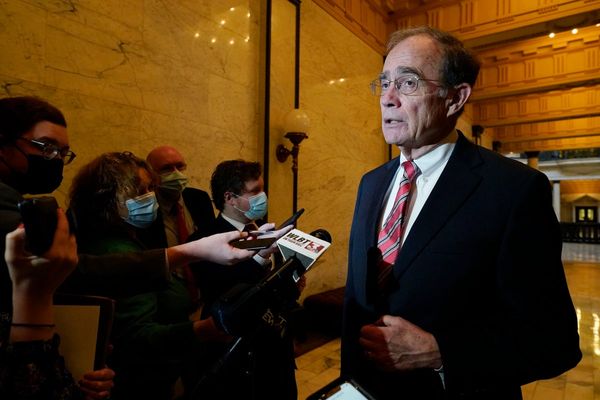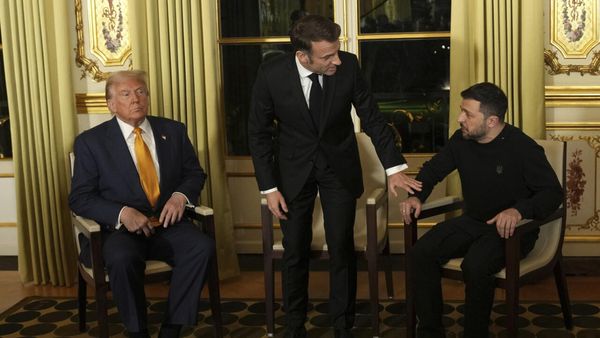
Don’t say it too loudly, for fear of jinxing it – but international travel is picking up again. Global tourism conferences like London’s World Travel Market are back, and the UK’s tourism marketing boards will be keen to drum up renewed business from abroad.
But I have a gripe; a rather long-standing one. It’s that the image these government-funded bodies present of the UK is, to put it mildly, rather monocultural.
VisitBritain, which has been in existence for 52 years, is tasked with raising Britain’s profile worldwide, increasing the volume and value of tourism exports and developing our so-called “visitor economy”. Go to the tourist board’s website, and you’ll see only a handful of black or brown faces in a local context – and only one non-white face on the Board. You’d be hard pressed to recognise this as Britain in 2021.
Last month was Black History Month – but you wouldn’t have known from the content online. Type “Black history” into VisitBritain’s search box and very little comes up (though, to be fair, there is one half-hearted article about Black History Month events).
Looking up the “Top cultural and educational things to do in 2021”, I find Jane Austen-related sights and maritime history. In “Reasons Why Britain’s Brilliant in 2021”, we have castles, RHS gardens and the 150th anniversary of the Royal Albert Hall. What you mostly see are the usual tropes of royal pomp and ceremony, plus image after image of quaint, scenic countryside and ornate palaces – but very little said or shown about contemporary multicultural Britain.
In this picture we paint of what Britain looks like, where, oh where, is the culture and contribution of ethnic minorities?
It never fails to surprise me what an outdated view of the UK many other countries still have - partly because they are fed a stodgy, unvaried diet of Olde Britain
As a broadcaster and journalist who travels all over the world for work, it never fails to surprise me what an outdated view of the UK many other countries still have. When I talk to people overseas, their abiding perception of this country revolves around the Queen, Buckingham Palace, snow, old buildings, and perhaps Premier League football. My theory is that this is partly because they are fed a stodgy, unvaried diet of Olde Britain by the gatekeepers of British heritage, the media and Hollywood.
Visit Britain seems to feed this exact image back to them: in the “Film and TV” section of the website, which points to locations used on screen, the UK’s global onscreen images largely revolve around all-white period dramas, Nineties Richard Curtis films, James Bond and Sherlock Holmes (although this has admittedly been spiced up by the recent inclusion of Netflix series Bridgerton, a Regency drama with a modern twist that includes actors of colour). In the Culture section we have itineraries based around Shakespeare, Agatha Christie, Dickens and Wordsworth. To the rest of the world, we seem, quite literally, to be living in the past.
Where are the dynamic contributions made to the fabric of this country by hundreds of years of immigration and ethnic minority communities? Not to mention Black and Asian historical figures, and Black-influenced or built landmarks and venues. Georgian London, for example, had a thriving black population. Surely many international tourists would be interested in knowing more about that?
In a more contemporary sense, around the corner from me in West London is one of Britain’s oldest reggae shops, rich in heritage and culture: a foreign tourist wouldn’t know that. Or take the role British Asians have played in our fashion and culinary culture. Did you know Britain’s first Indian food restaurant was founded in 1810? And what about the curry house scene in Rusholme in Manchester, going back decades? What about Black and Asian British sporting heritage – or the influence of ethnic minorities in business and entertainment? I won’t even dwell on the role of slavery and colonialism and the culture war the National Trust (they of the stately homes and country walks shtick) has found itself at the heart of.
There is a diversity deficit at the very heart of the UK’s travel branding, and it has to change. I have raised the issue with a former culture secretary and a one-time boss of VisitBritain, and while both expressed sympathy for my viewpoint, they felt relatively powerless to effect any change – suggesting an innate conservatism at the heart of the UK tourism establishment. But I would welcome an open discussion with UK tourism chiefs about how my concerns could be addressed.
When we approached VisitBritain, deputy CEO Patricia Yates said their portrayal of Britain’s diversity was a “key consideration” and they had plans to develop it – although she felt they had made “good initial steps”.
I guess we disagree on that.
Yates also said they were planning a new international marketing campaign next year, which would showcase a “modern, diverse, accessible and inclusive Britain”.
I’m all eyes and ears, although it’s going to take a paradigm shift if it’s to reflect the multicultural Britain we see all around us.
In defence of British travel marketers, I recently spoke to an American travel PR who pointed out that there is a degree of mutual enforcement in this stereotypical image of the UK that’s still being projected internationally. Because the average couple from Idaho want to see the royal palaces and ancient rituals they have been fed by a diet of outdated educational resources, tourism marketing and global media (I’m looking at you, The Crown), they are unlikely to venture off the well-trodden tourist trail. It’s a kind of perpetual echo chamber.
I believe it’s up to the likes of Visit Britain (and regional tourism outfits such as Visit England, Visit Scotland and Visit Wales) to stop plugging this lowest-common-denominator, caricature version of the UK. But they’ll have to sway the UK travel and tour companies, too – who can be just as guilty of peddling a one-dimensional image of this gloriously diverse nation to overseas markets.
You might expect individual city tourism bodies in the UK to dial down the clichés in their comms. But in their 21 Things to Do in 2021 round up, the Visit Manchester website is also surprisingly homogeneous. An expanded Jewish museum and an LBGT festival are the closest we get to anything more diverse. Again, I struggled to find one non-white face on the website.
Recently I watched a webinar on the new Great West Way project, spotlighting a rural route from London to Bristol. Sally Balcombe, the CEO of Visit Britain, was on the panel. There was no mention, or even visual representation of, people of colour in the promotional video, and no reflection of communities such as Bristol’s BAME population.
There is a diversity deficit at the very heart of the UK’s travel branding, and it has to change
It seems to me that we’re in danger of selling an anachronistic, skewed version of this country to the rest of the world.
I don’t think British tourism bodies can adequately do their job of promoting the UK until they reflect things as they really are today – and stop relying on an antiquated, whitewashed version of British culture to sell trips here. All the recent rhetoric in the travel industry has been about a “reset” in the wake of the Covid-enforced shutdown, and a need to achieve greater sustainability – which should include embracing diversity and involving local communities in international tourism marketing.
That also means spreading the love and encouraging tourism to other areas outside the dominant “ye olde” stops: London, Bath, Salisbury and Edinburgh. It’s an opportunity for the likes of Visit Britain to step up, branch out and show the UK as it is now – only time will tell if they will take it.







